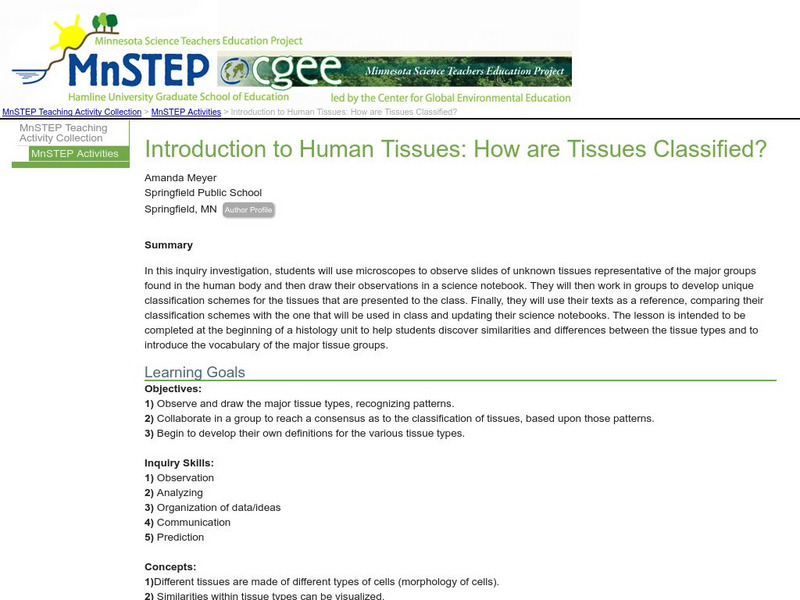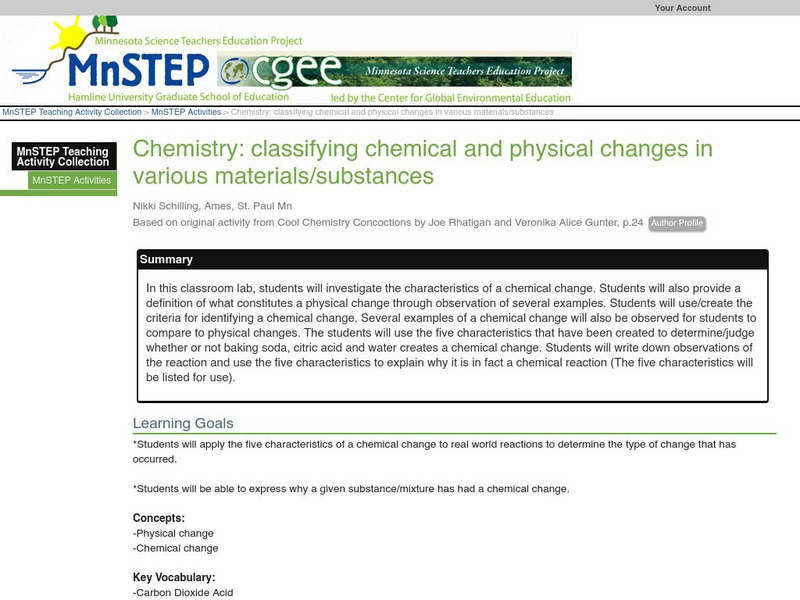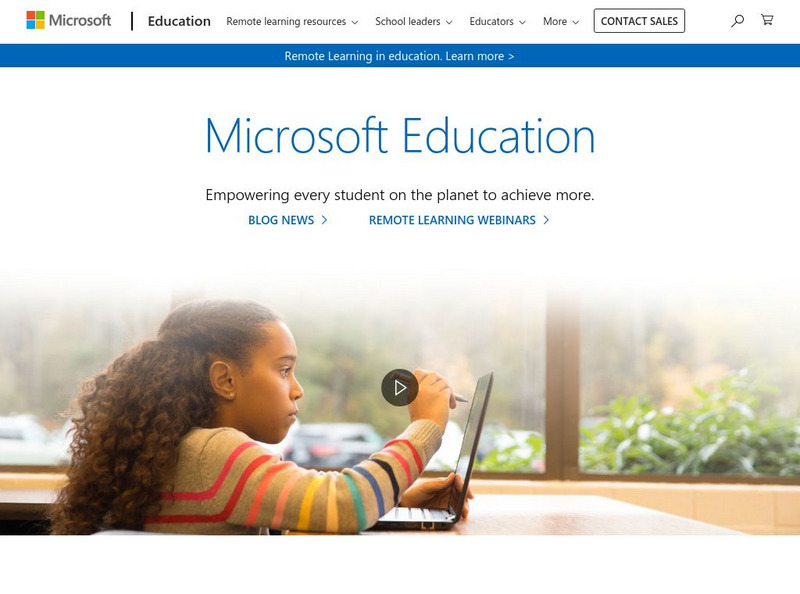Curated OER
Astronomy
In this astronomy instructional activity, students read a detailed text about our solar system. Students then answer 15 questions about the information presented.
Curated OER
Sounds of the Wetlands
Students identify the sounds of different bird calls. In this biology lesson, students create a sound map. They explain how this method is important in tracking wildlife.
Curated OER
Milky Way Galaxy
Students simulate stars in the Milky Way Galaxy using newspaper prints. In this space science lesson, students compare the number of 'stars' on their page to familiar things. They calculate how many pages they need to have the same...
Curated OER
Bark Casts
Students make a plaster cast of tree bark. They use plaster casts of tree bark to make a simple classification system. Also, they use plaster casts of tree bark to identify individual trees.
Curated OER
Candy Keys
Learners experiment with dichotomus keys using different types of candy. They complete a worksheet while making five different keys. They eat the candy to end the lesson.
Science Education Resource Center at Carleton College
Serc: Observing,comparing and Classifying Rocks
An activity where students in teams observe and classify different types of rocks.
National Endowment for the Humanities
Neh: Edsit Ement: Fable and Trickster Tales Around the World
The lessons presented in this website "introduce children to folk tales" and how these folktales are changed and affected by generational and cultural values. Includes several links to further related information on folktales, fables,...
CPALMS
Cpalms: Observable Properties of Matter
[Free Registration/Login Required] Young scholars will sort objects according to their observable properties, such as size, shape, color, temperature (hot or cold), weight (heavy or light) and texture. Included are printable resources, a...
Utah Education Network
Uen: Classifying Rocks and Minerals
Fourth graders identify rock types by observing key characteristics.
Huntington Library
Huntington Library: Making Community Measurements: Biotic Factors [Pdf]
A lesson plan in which students explore plant communities and observe and classify different types of vegetation. Includes discussion questions, extension activities and web links, a vocabulary glossary, and handouts.
Science Education Resource Center at Carleton College
Serc: Bird Characteristics
In this lesson, students will learn bird characteristics through observation and classifying activities. Indoors they will be introduced to bird study through learning about John James Audubon, followed by a basic drawing lesson to aid...
Science Education Resource Center at Carleton College
Serc: Discovering Plate Boundaries
A classroom activity designed to introduce students to the process of observing and classifying data, in addition to the fundamentals of plate tectonics.
Science Education Resource Center at Carleton College
Serc: Introduction to Human Tissues: How Are Tissues Classified?
In this investigation, learners will observe slides of unknown tissues and then draw their observations in a science notebook. They will then work in groups to reach a consensus as to the classification of tissues. This lesson is...
Science Education Resource Center at Carleton College
Serc: Classifying Chemical and Physical Changes in Various Materials/substances
In this classroom lab, students will investigate the characteristics of a chemical change. Students will also provide a definition of what constitutes a physical change through observation of several examples. Students will use/create...
CK-12 Foundation
Ck 12: Fifth Grade Science: Earth Science: Weather and Water in the Atmosphere
[Free Registration/Login may be required to access all resource tools.] Discusses what causes weather, what humidity is and its role in the weather, how clouds are classified, and types of precipitation and how they form.
Science Education Resource Center at Carleton College
Serc: Investigation of the Minnehaha Falls Area
A lesson plan where students observe rock types and classify the rocks in the Minnehaha falls area. Students will also make predictions about the cause of the shape of the landscape. Students will record their findings in a journal....
Science Education Resource Center at Carleton College
Serc: Rock Investigation
In this activity students will observe and investigate rocks in order to classify them in terms of color, shape, texture and size.
Science Education Resource Center at Carleton College
Serc: Minnesota Fish Families
Students will be introduced to Minnesota Fish from their local area, then sort, identify, and classify fish using observations.
Indiana University
Indiana University Bloomington: Identifying 3 D Fossil Prints [Pdf]
In this instructional activity, young scholars will identify three-dimensional (3-D) prints of common Indiana fossils to the kingdom, phylum, or class level. Students will observe and record the morphology of specimens and classify...
American Geosciences Institute
American Geosciences Institute: Earth Science Week: Mineral Identification
At this site you can identify minerals by observing and testing the physical properties of each mineral. A mineral worksheet and mineral background sheet are included in this site.
Science Education Resource Center at Carleton College
Serc: Mn Step: Rocks a Lesson in Inquiry
For this activity, students sort and classify rocks in small groups, and record questions they have. The class will sort the questions into investigatory and non-investigatory questions. They will choose one to investigate, make a...
ClassFlow
Class Flow: Classifying Invertebrates
[Free Registration/Login Required] This is a lesson on classifying invertebrates based on their observable features. It focuses on the three types of worms: flatworm, roundworm, and segmented worm. The lesson contains 3 videos as well as...
Science Education Resource Center at Carleton College
Serc: Investigating Insects in Nature
In this lab, students will collect insects while making close observations of living things. They will then classify insects into seven common groups based on characteristics discussed in the classroom.
Microsoft
Microsoft Education Lesson Plan: Candy Is Dandy
Explore color distribution of M&M candies using this detailed lesson plan. An engaging integrated lesson plan that requires understanding of spreadsheets and formulas, and logical reasoning. Links to related websites.




















